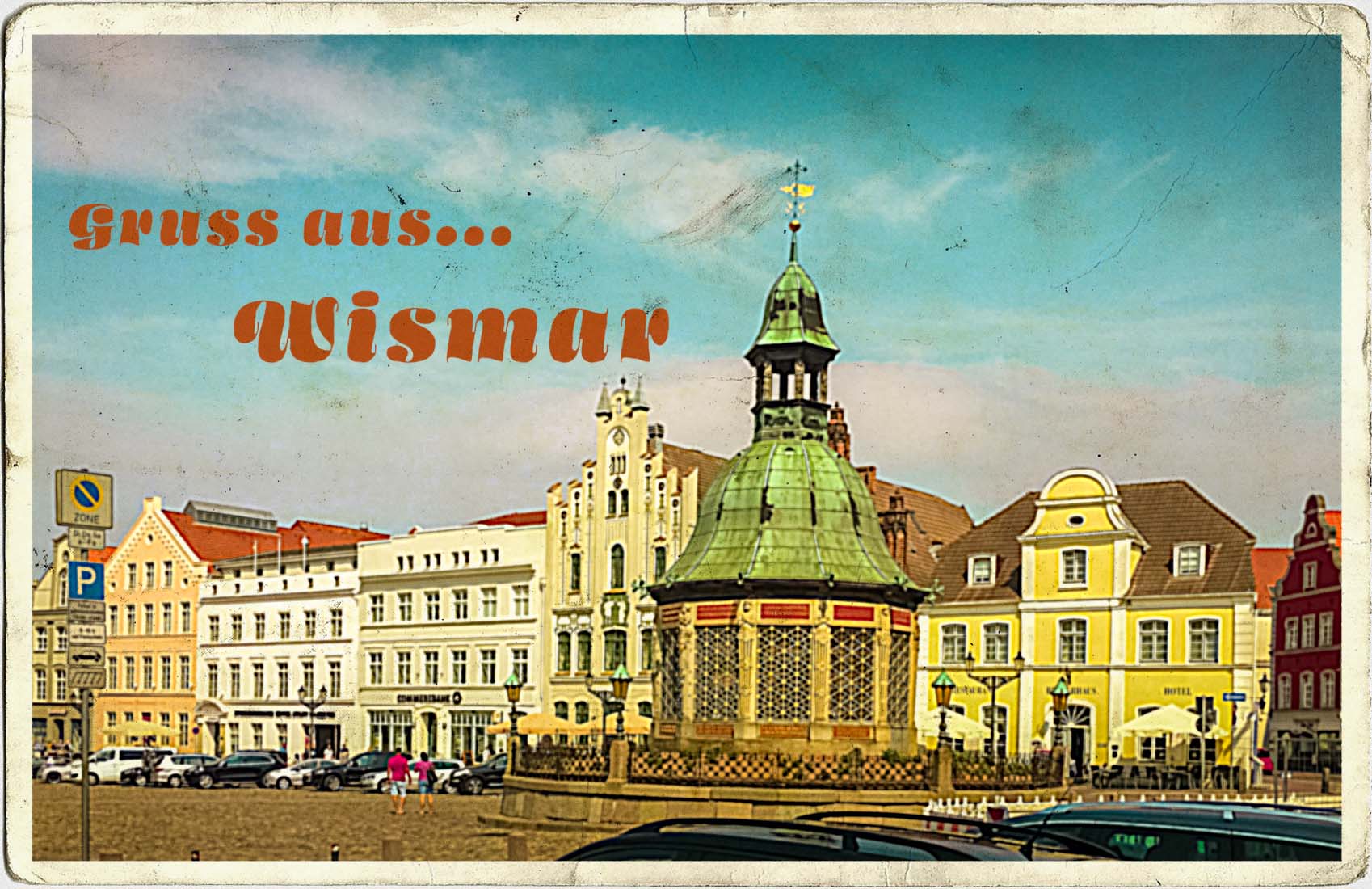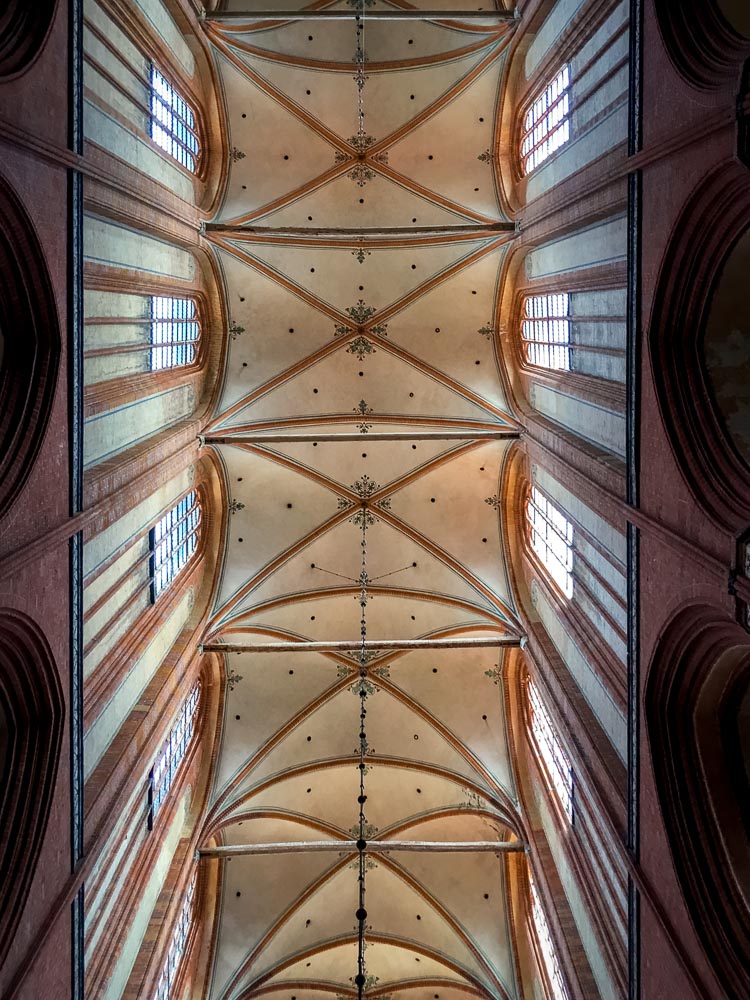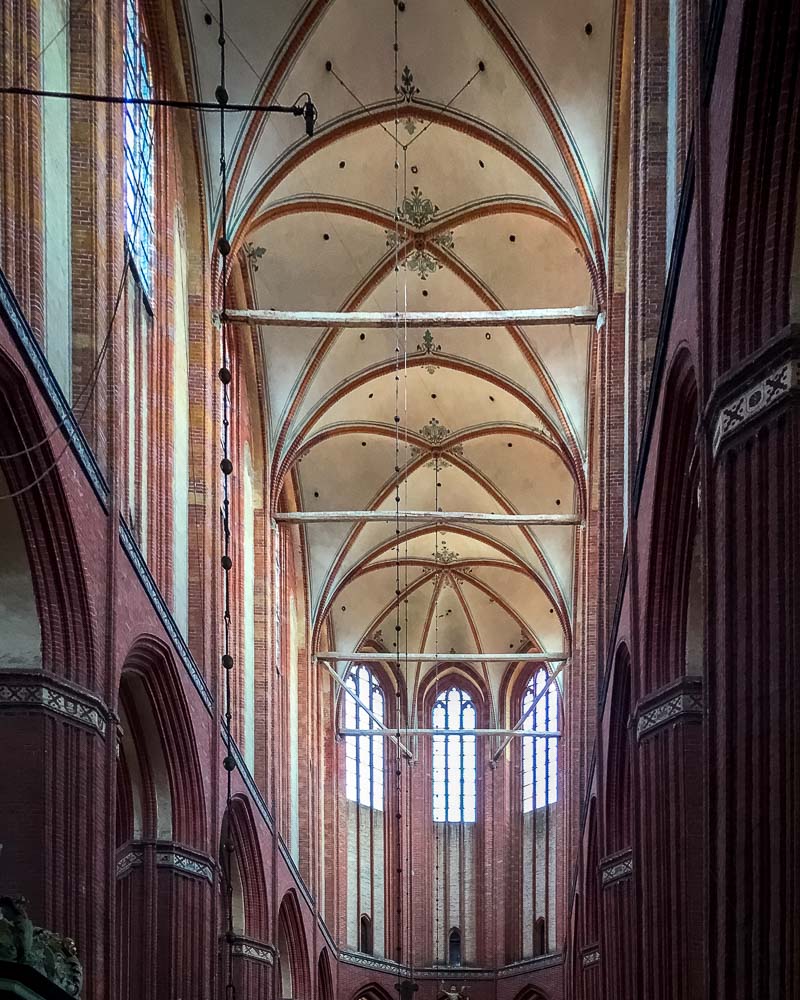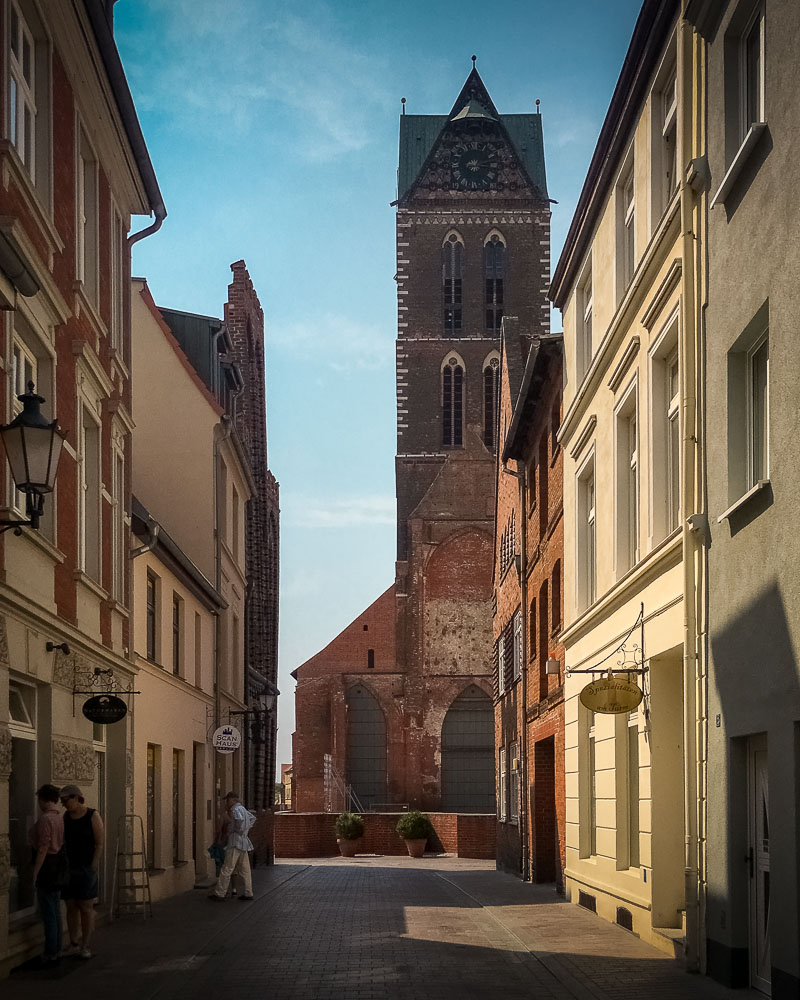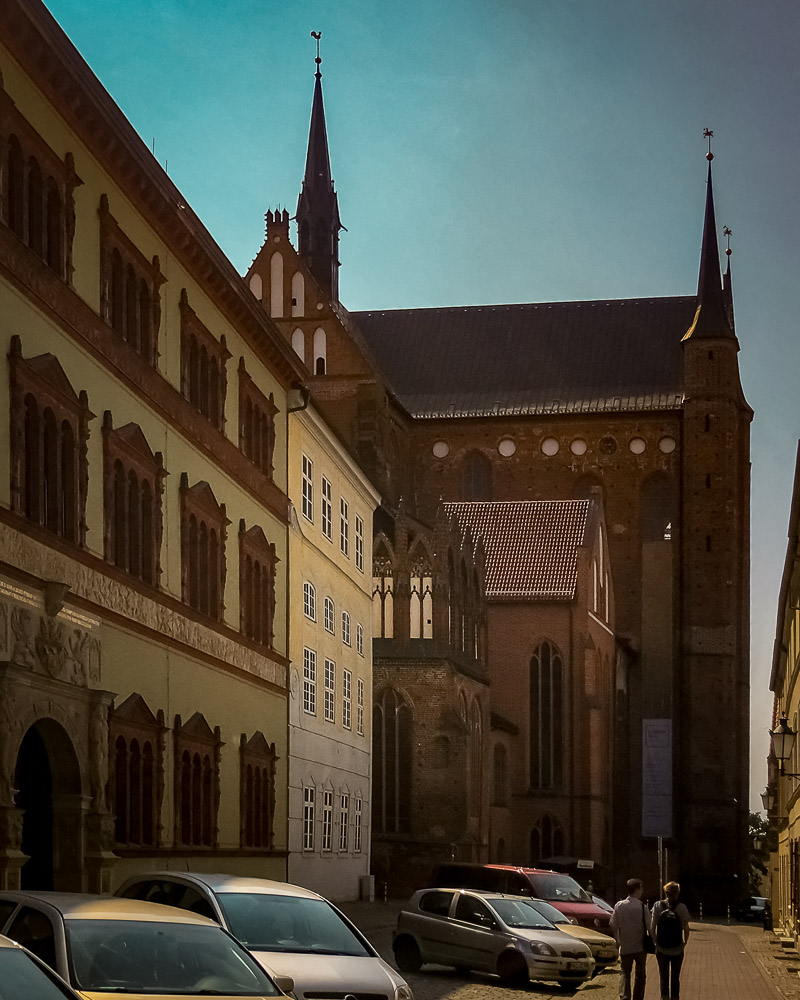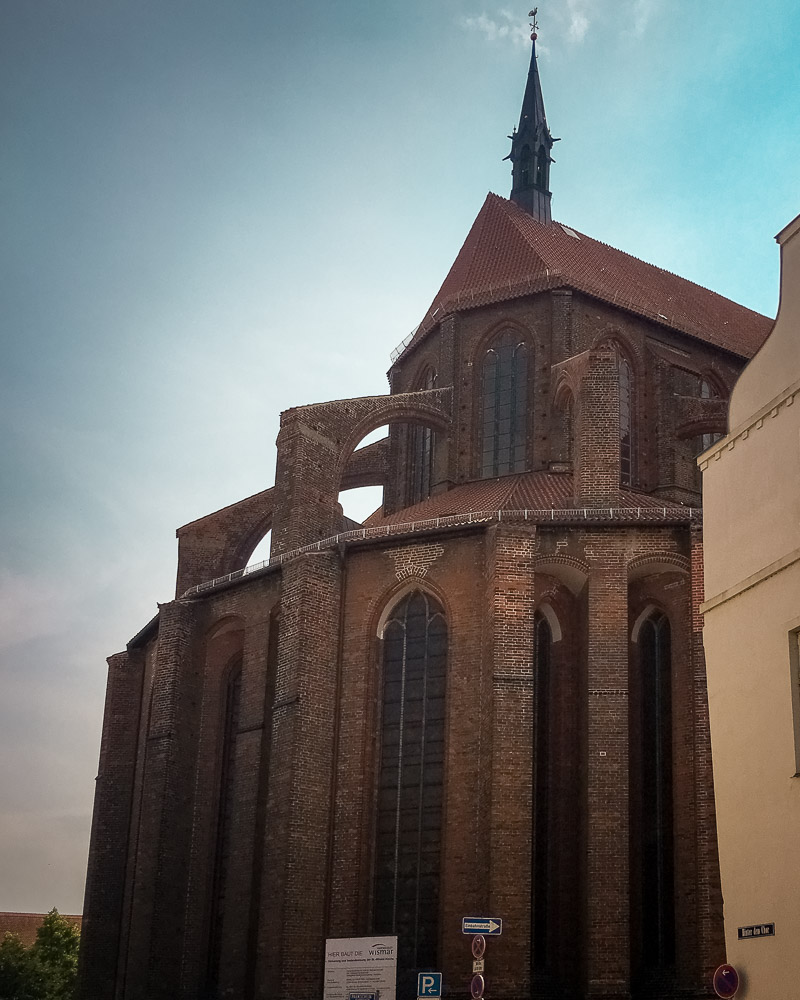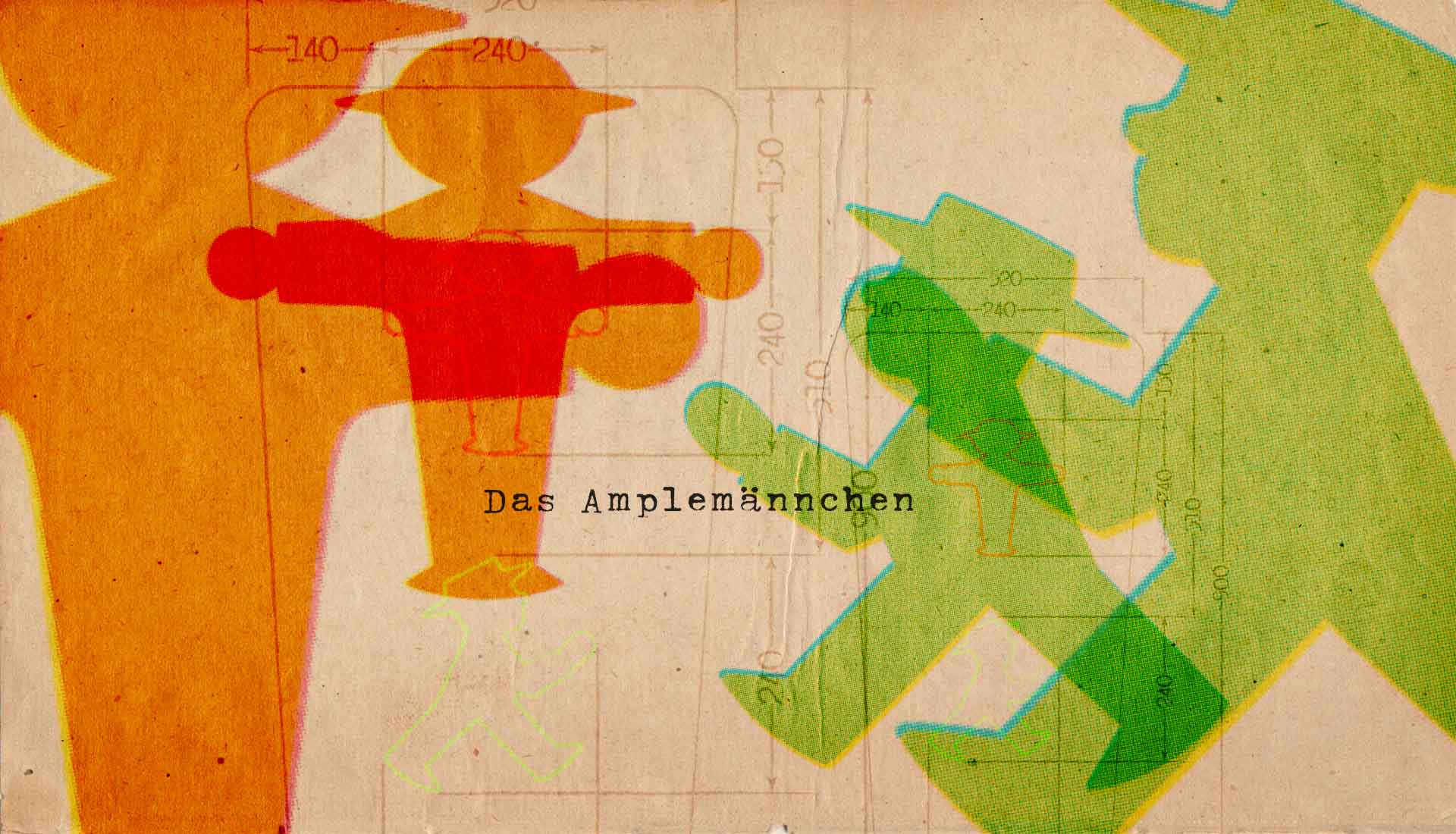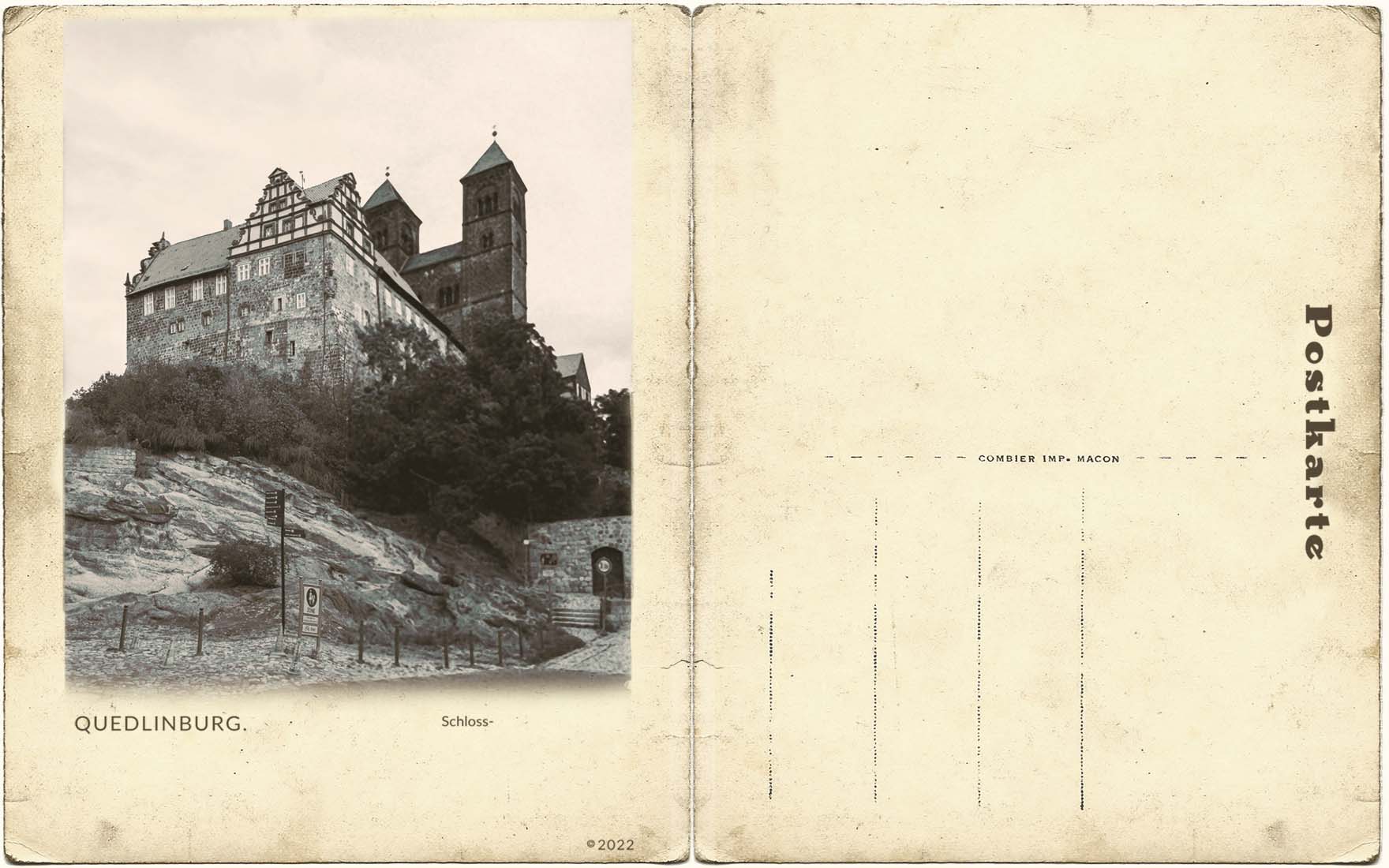
n this hot summer Saturday, we are headed to Wismar traveling by motorcycle - hence my giant helmet head. Wismar has an interesting history. With its origins as a Slavic settlement, Wismar's recorded history began in the 12th century. At various times, Wismar has been part of Sweden and Germany (including East Germany). Wismar received its civic rights in 1229 and, in 1259, it had entered a pact with neighboring towns in order to defend itself against Baltic pirates. During the 13th and 14th centuries it was flourishing with important wool factories. In 1376, the plague reduced the population of Wismar by 2,000. Despite this, the town remained fairly prosperous until the 16th century. In 1648 Wismar passed into the possession of Sweden. Although Wismar became part of Germany in 1871, Sweden only officially renounced its claim to the city in 1903. The heavily damaged Wismar became part of the Soviet Zone of Germany. Although the East German government pledged to restore churches that had been heavily bomb-damaged during the war, this commitment was - for the most part - not fulfilled. After German reunification in 1990, churches and other historic buildings in the city's Altstadt (old city center) were restored, and Wismar was listed as a UNESCO world heritage site.

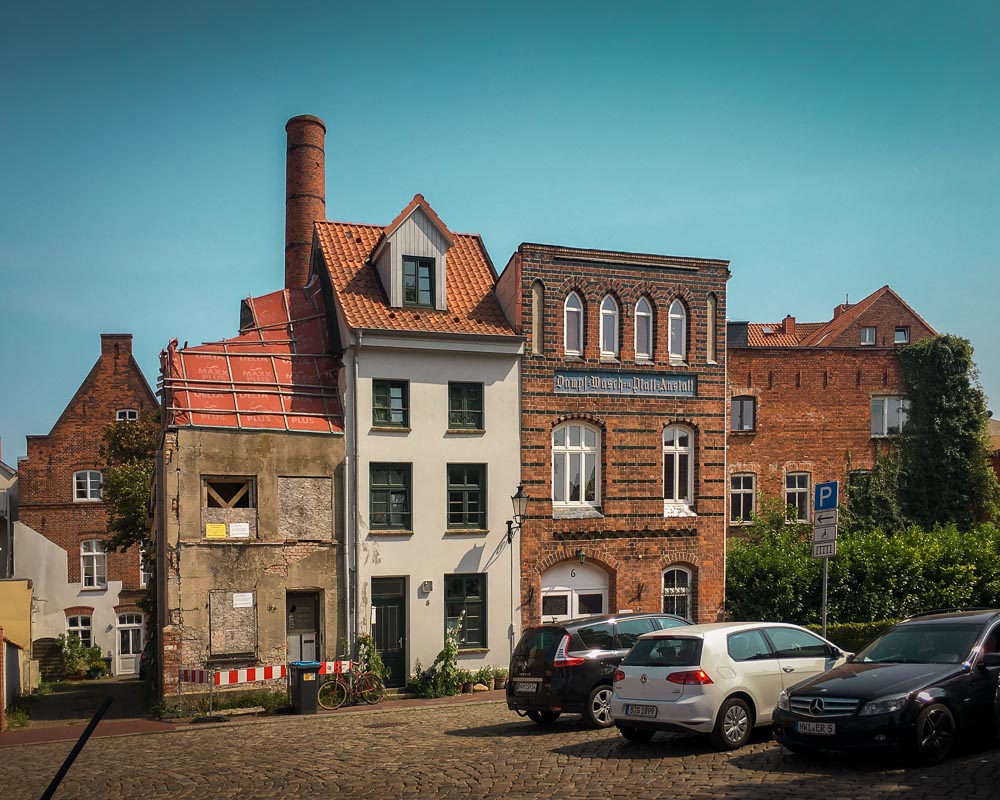
Walking around, I am struck by how unbelievably HOT it is. The sun is unrelenting and, despite being near water, there is no breeze. I mean none at all. Ok, I see that it is only about 80 but still.
Olaf tells me that, as with many of these old East German cities, they are in various states of renovation/disrepair. He describes the grey cement with which the buildings were all built (all covered in coal soot) or disguising any original architecture that may have survived. Sometimes, a building was just left to decay whereas the house next to it has escaped ruin.
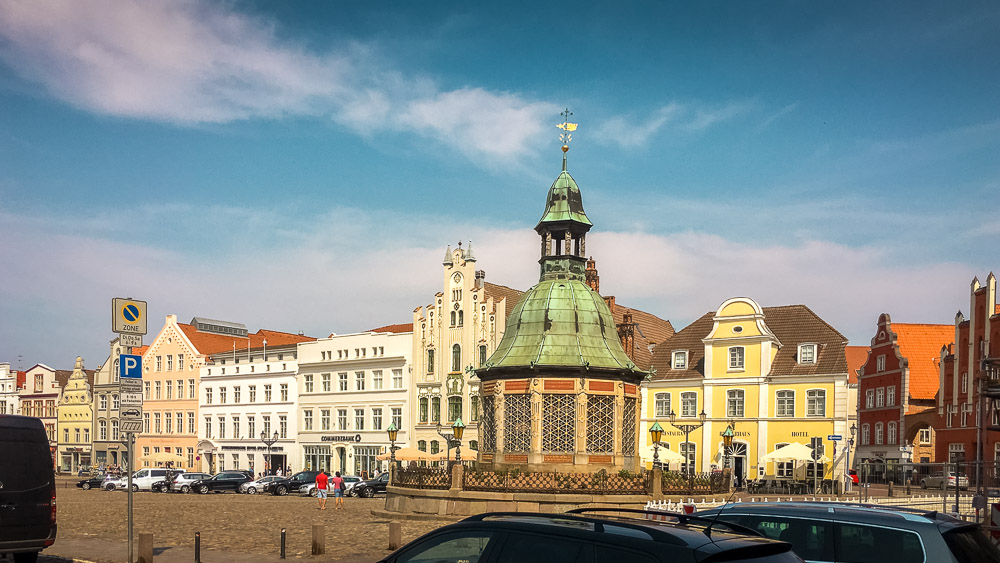
In the center of the old town is the large marketplace surrounded by buildings with different styles ranging from 14th-century North German Gothic to 19th-century Romanesque revival to Art Nouveau. The square’s focal point is the Wasserkunst, an elaborate wrought-iron fountain imported from Holland in 1602. Another notable building in the square is a Brick Gothic Bürgerhaus (patrician’s home) called the Alter Schwede (The Old Swede).
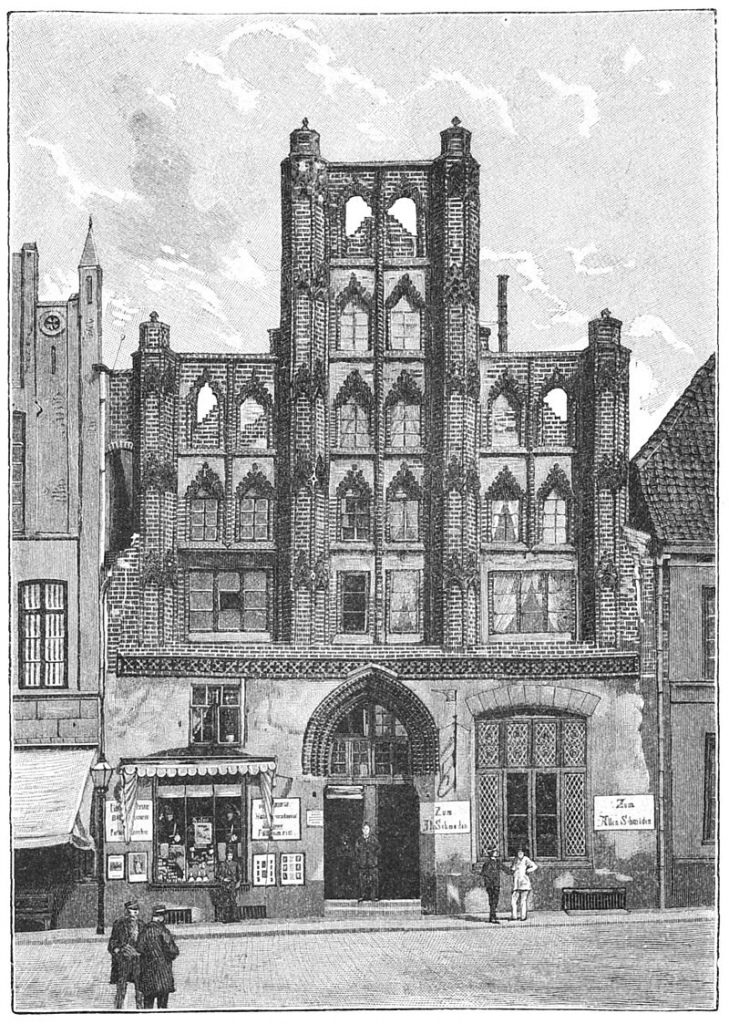
Built around 1380, Old Swede is called the oldest house in Wismar. The building was built in the late brick gothic style at the market place. The term Old Swede, however, only emerged later, in connection with the reappraisal of the Swedish period in Wismar in the 19th century, to which one of the Swedish heads in the portal above the entrance door also refers. A characteristic feature of the house is the stair-shaped gable construction. At that time, the ground floor contained residential and business premises. The other floors were used as storehouses. In 1878, an inn was opened in the building for the first time. The building was extensively restored during the GDR era in 1977. Today it is used as a restaurant.
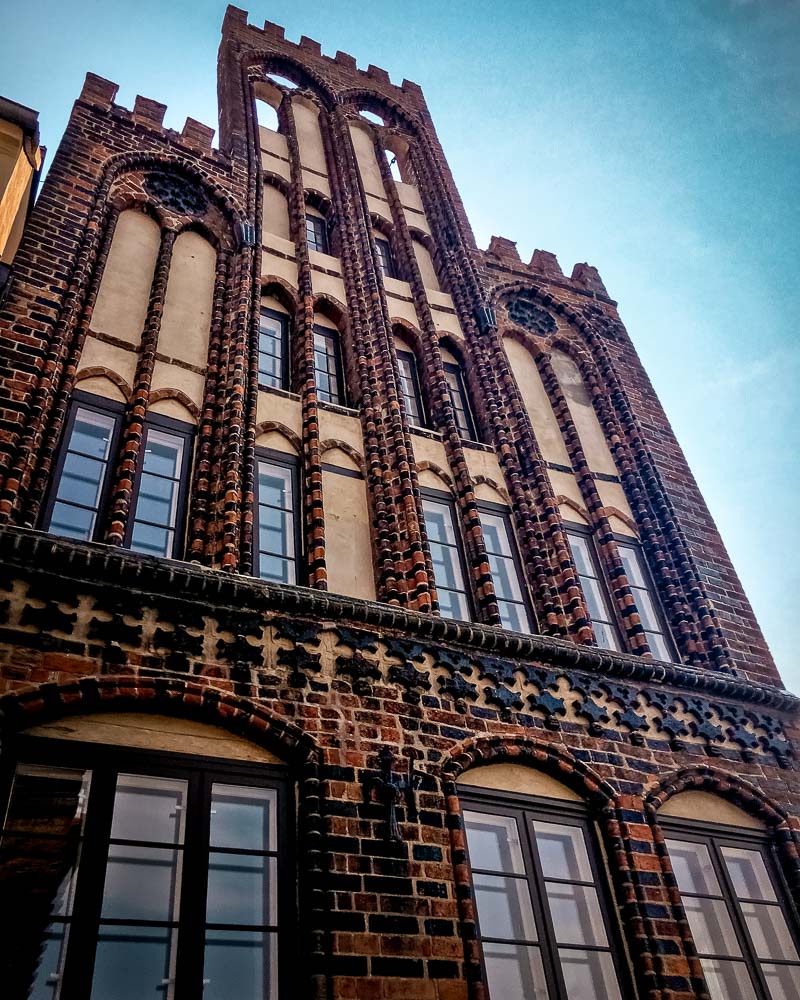
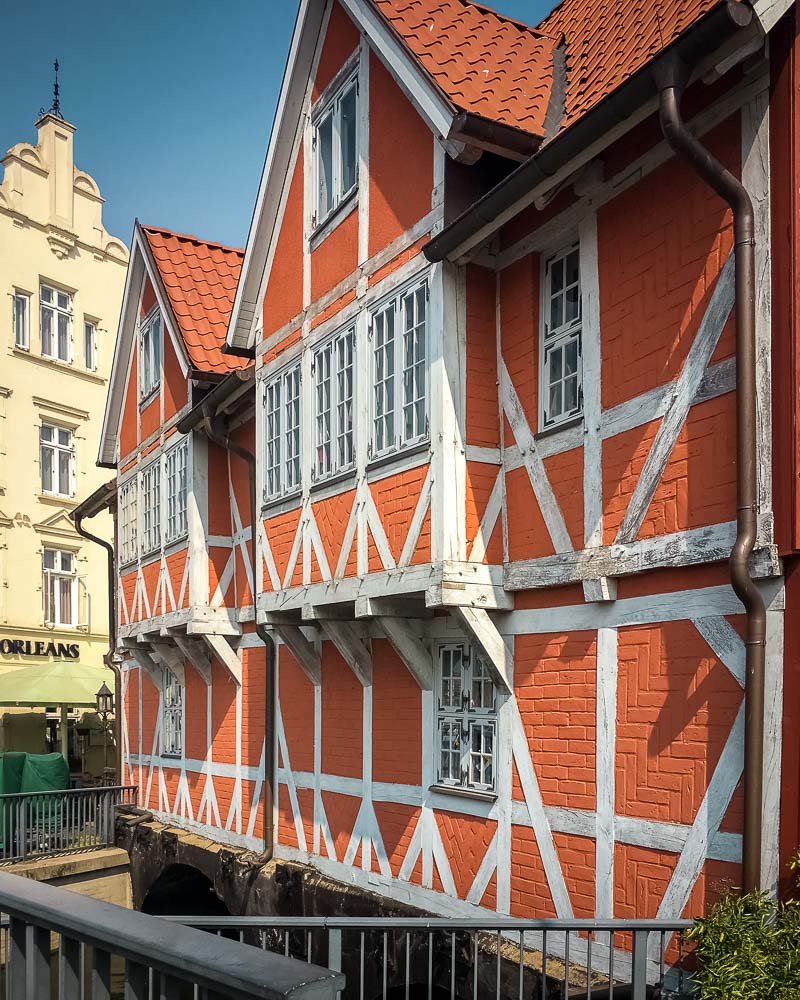
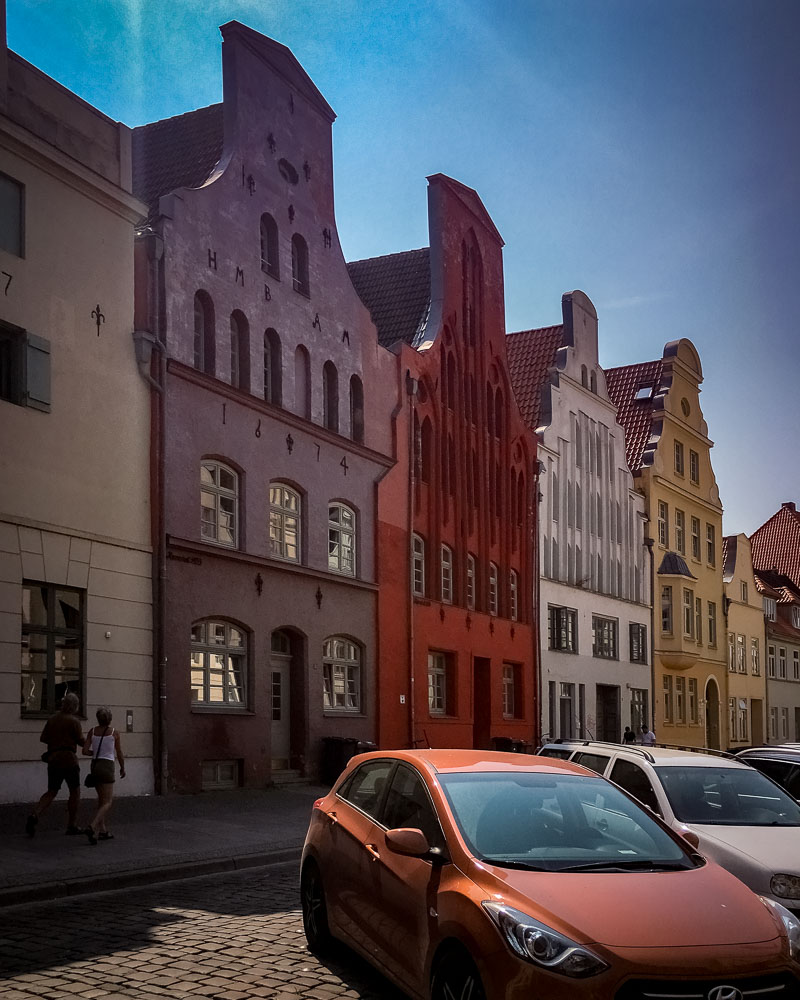
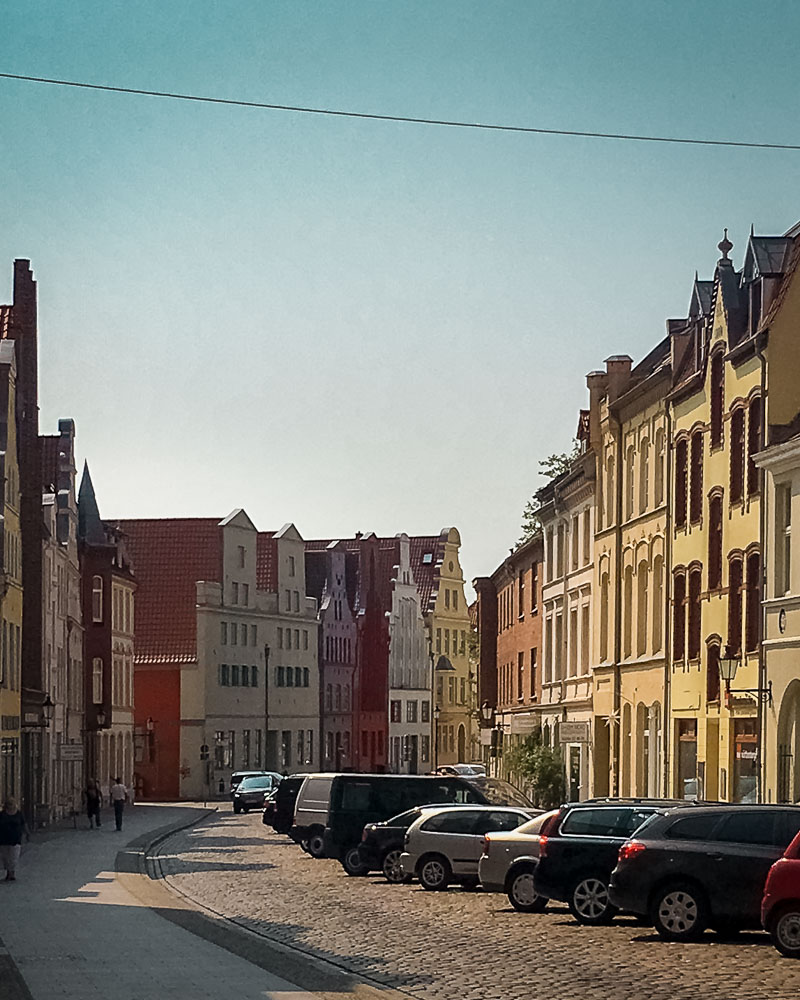
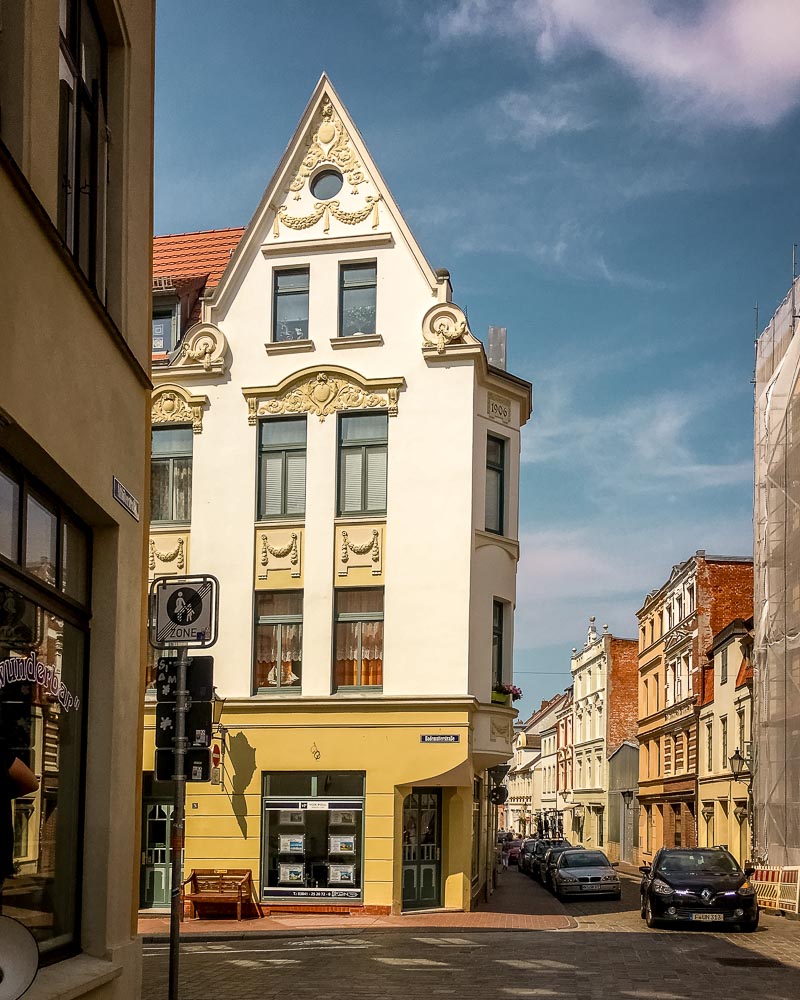
There are several churches in Wismar. St. George’s Church, dating from 1404, was heavily damaged three weeks before the end of the war. After German reunification, reconstruction was completed in 2010. The high tower church of St. Mary’s Church is the only remainder of the original building built in the first half of the 13th century. It suffered heavy damage in World War II, and was partially razed in 1960 by the East German government. St. Nicholas was built from 1381 until 1487 as a church for sailors and fishermen and boasts very lofty vaulting.
Eventually, we are too hot to continue. A stop at a cafe for an ice cream coffee and some rest in the shade and we are ready to make the trek home. I feel that there is much more to see in this town – I will make a note to return.


